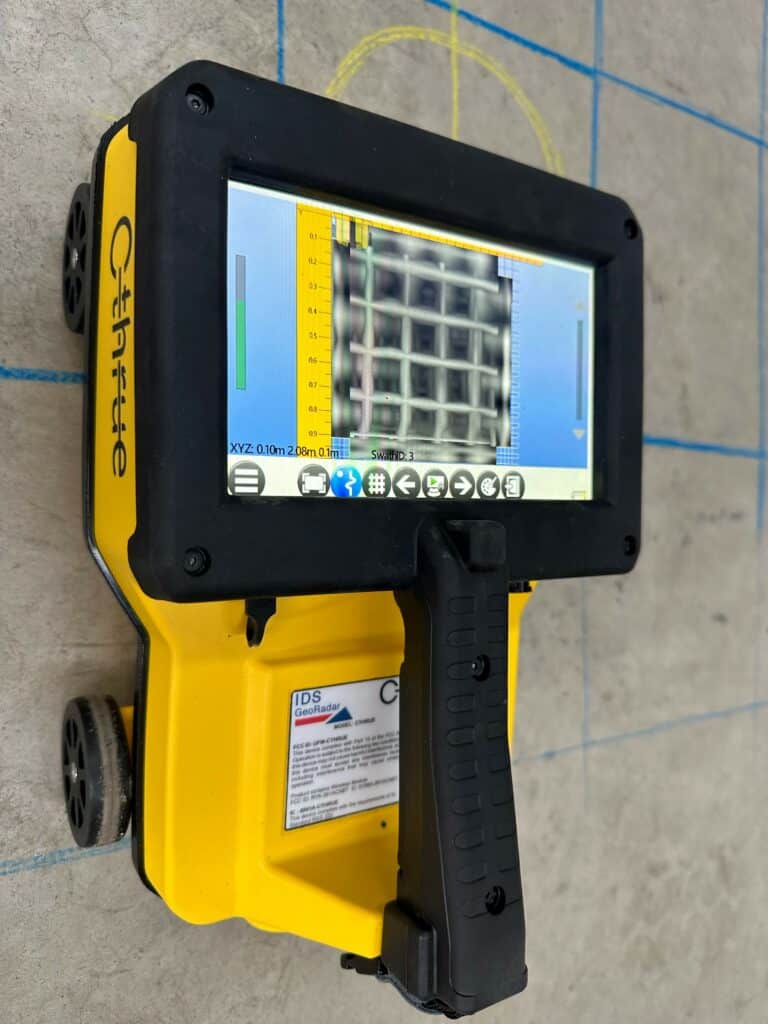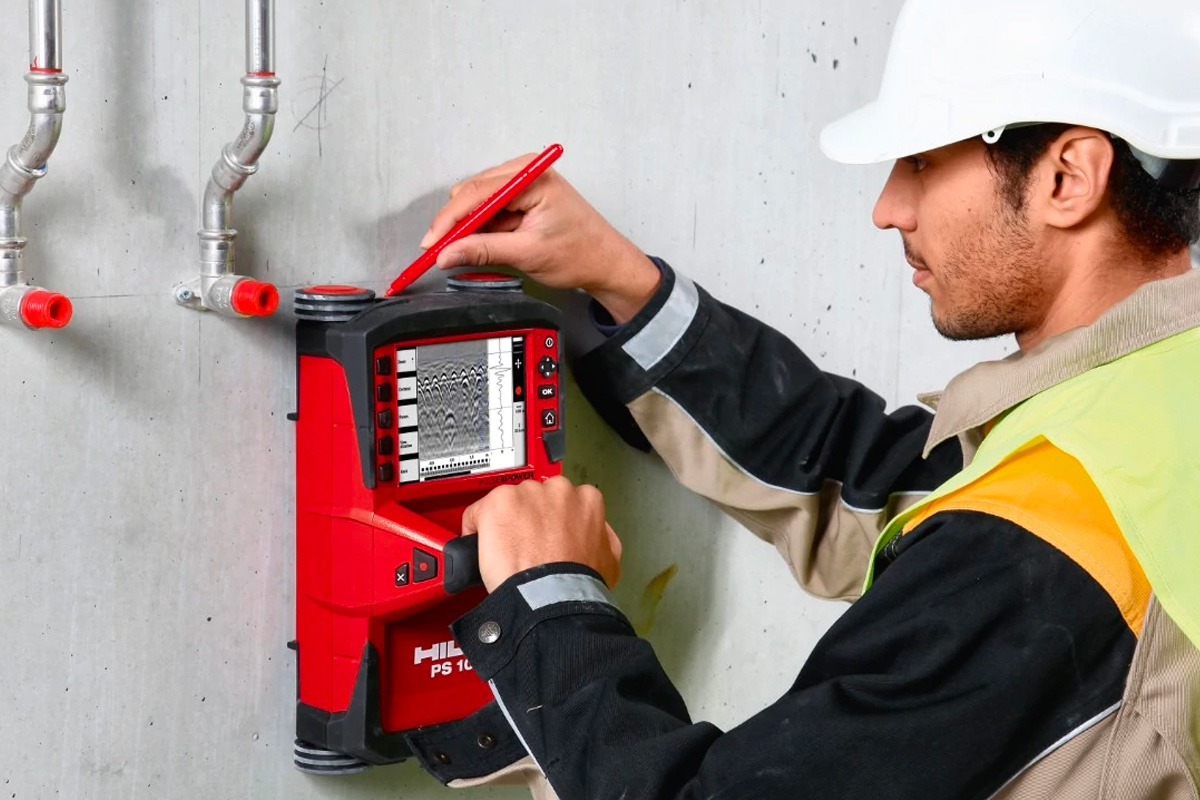Elevate Your Building Process With the Strategic Insights of Concrete Scanning for Boosted Performance
One such innovation that has revolutionized the building and construction industry is concrete scanning. By utilizing the calculated understandings supplied by concrete scanning, building and construction specialists can unlock a realm of enhanced productivity and streamlined processes.

Advantages of Concrete Scanning
Enhancing project effectiveness and safety and security, concrete scanning offers a non-destructive technique for identifying concealed things within concrete frameworks. By making use of technologies such as ground-penetrating radar (GPR) and concrete x-ray imaging, building groups can accurately situate rebar, post-tension wires, electric avenues, and various other blockages before drilling, cutting, or coring into concrete.
The benefits of concrete scanning are many. Building and construction sites can be complicated atmospheres, and understanding what exists beneath the surface can protect against injuries and mishaps.
Furthermore, concrete scanning advertises total job performance by avoiding and improving workflows rework. By determining prospective concerns beforehand, groups can readjust their strategies proactively, conserving time and sources in the long run. Basically, the adoption of concrete scanning technologies is a strategic investment that pays dividends in terms of efficiency, cost-effectiveness, and safety and security.
Technology Assimilation for Effectiveness
Concrete scanning's ability to improve process and boost job efficiency can be additional enhanced with critical assimilation of innovative innovations. By incorporating Building Details Modeling (BIM) software application right into concrete scanning processes, building and construction teams can attain a greater degree of accuracy and control. BIM enables the creation of 3D designs that provide comprehensive understandings into the job, making it possible for far better decision-making and minimizing the possibility of errors. Additionally, the combination of Enhanced Fact (AR) modern technology with concrete scanning can improve on-site visualization, allowing project supervisors and workers to overlay electronic info onto the physical setting in genuine time. This can facilitate more accurate positioning of aspects and enhance interaction among group participants. The use of drones for aerial surveys in combination with concrete scanning can accelerate information collection and analysis, allowing faster decision-making and progression tracking. In general, the strategic assimilation of these technologies can significantly improve effectiveness and productivity in building jobs.
Staying Clear Of Expensive Mistakes
Exactly how can precise focus to detail during concrete scanning processes aid building and construction groups in stopping pricey errors? Concrete scanning plays an essential function in identifying potential problems prior to they escalate right into costly mistakes. By using sophisticated scanning modern technologies such as Ground Permeating Radar (GPR) and electromagnetic induction, building groups can properly detect rebar, utilities, gaps, and other blockages within concrete structures. This degree of precision enables task supervisors to make educated decisions relating to the format and style of their construction plans, lowering the risk of unintentional damage to vital infrastructure throughout the building procedure. Additionally, concrete scanning assists in guaranteeing architectural honesty by identifying weaknesses or flaws in the concrete very early on, enabling for prompt repairs and modifications. By proactively attending to these problems, construction teams can avoid pricey mistakes such as rework, delays, or safety threats that may develop from overlooked disparities in the concrete framework. Inevitably, investing in complete concrete scanning treatments verifies to be a cost-effective method in the lengthy run, saving both time and sources while improving overall task performance and quality.
Enhancing Job Administration
Meticulous focus to information during concrete scanning processes not only aids in preventing pricey mistakes yet additionally lays a strong foundation for efficient project monitoring in building and construction ventures. By integrating concrete scanning technology into task administration techniques, building groups can streamline operations, improve communication, and ensure that tasks remain on track.
Concrete scanning provides important insights right into the architectural stability of existing elements, permitting task supervisors to make informed choices relating to style modifications or construction series. This proactive method reduces the danger of unforeseen hold-ups or rework, eventually conserving time and sources. Furthermore, the information acquired from concrete scanning can be incorporated right into Structure Information Modeling (BIM) systems, enabling real-time collaboration and coordination amongst different stakeholders.
Additionally, concrete scanning aids task supervisors identify potential dangers or obstacles prior to they rise into bigger concerns, advertising a safer workplace for all included. With boosted exposure and precision given by concrete scanning technology, task managers can effectively prepare, monitor, and perform building projects with better efficiency and confidence.
Optimizing Efficiency
One essential element of maximizing efficiency is through the adoption of concrete scanning technology. By using ground-penetrating radar (GPR) and other scanning approaches, construction teams can accurately locate rebar, channels, and various other subsurface components, decreasing the danger of expensive errors and delays throughout excavation and boring.
In addition, welcoming Building Info Modeling (BIM) software can significantly enhance efficiency by developing detailed 3D versions that enhance job visualization and control among various trades. BIM permits for far better clash detection, allowing issues to be check this site out recognized and settled before building and construction also starts, conserving time and sources over time.
Implementing a lean construction method, which focuses on eliminating waste and enhancing efficiency across all job phases, is one more effective strategy for making the most of productivity. By promoting cooperation, interaction, and continuous renovation, building groups can work much more cohesively towards achieving project goals in a efficient and structured manner.
Verdict
Finally, the critical implementation of concrete scanning in the building and construction process supplies numerous advantages, consisting of increased effectiveness, price financial savings, enhanced task administration, and boosted productivity. By integrating this technology, building teams can avoid expensive errors, simplify their procedures, and maximize their total job result. Concrete scanning is an important tool that can boost visit here the construction process and cause even more rewarding and effective outcomes.
